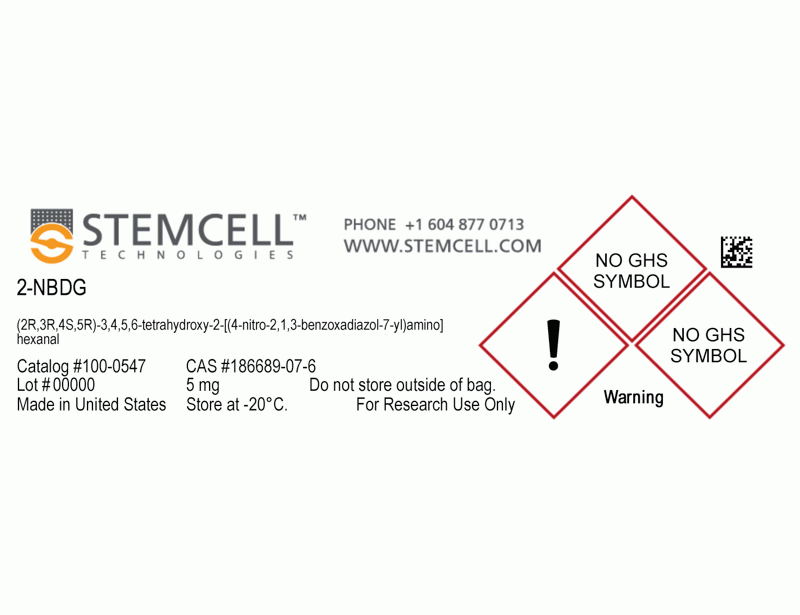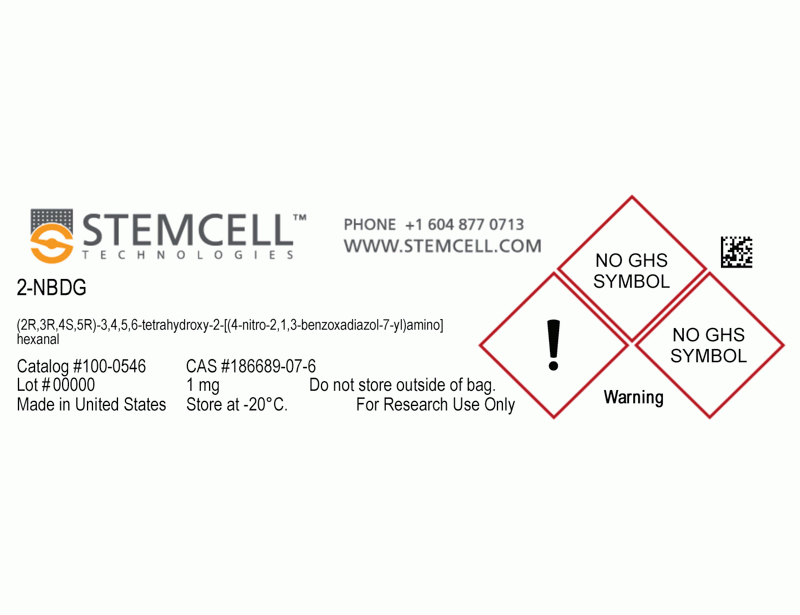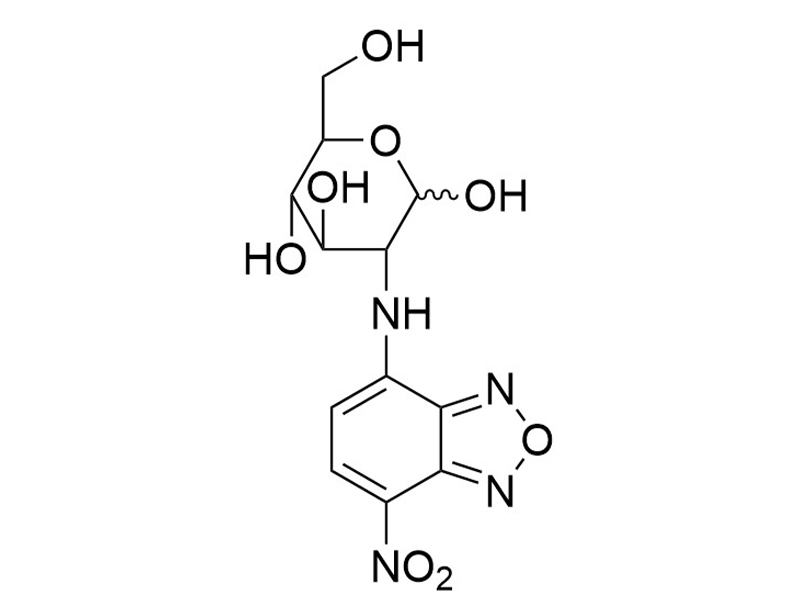概要
2-NBDG is a fluorescent glucose analog and it is used as an indicator for cell viability by monitoring glucose uptake in living cells (Zou et al.). 2-NBDG displays excitation and emission maxima at 465 nm and 540 nm, respectively (Yoshioka et al.). The glucose moiety in 2-NBDG is supplied as a mixture of α and β enantiomers.
CANCER RESEARCH
· Measures changes in glycolysis and has potential for use in breast cancer cells (Millon et al.).
CANCER RESEARCH
· Measures changes in glycolysis and has potential for use in breast cancer cells (Millon et al.).
技术资料
| Document Type | 产品名称 | Catalog # | Lot # | 语言 |
|---|---|---|---|---|
| Product Information Sheet | 2-NBDG | 100-0546, 100-0547 | All | English |
| Safety Data Sheet | 2-NBDG | 100-0546, 100-0547 | All | English |
数据及文献
Publications (3)
Breast cancer research and treatment 2011 feb
Uptake of 2-NBDG as a method to monitor therapy response in breast cancer cell lines.
Abstract
Abstract
This study quantifies uptake of a fluorescent glucose analog, (2-(N-(7-nitrobenz-2-oxa-1,3-diazol-4-yl)amino)-2-deoxyglucose) (2-NBDG), in a large panel of breast cancer cells and demonstrates potential to monitor changes in glycolysis caused by anticancer and endocrine therapies. Expressions of glucose transporter (GLUT 1) and hexokinase (HK I), which phosphorylates 2-NBDG, were measured via western blot in two normal mammary epithelial and eight breast cancer cell lines of varying biological subtype. Fluorescence intensity of each cell line labeled with 100 lM 2-NBDG for 20 min or unlabeled control was quantified. A subset of cancer cells was treated with anticancer and endocrine therapies, and 2-NBDG fluorescence changes were measured. Expression of GLUT 1 was necessary for uptake of 2-NBDG, as demonstrated by lack of 2-NBDG uptake in normal human mammary epithelial cells (HMECs). GLUT 1 expression and 2-NBDG uptake was ubiquitous among all breast cancer lines. Reduction and stimulation of 2-NBDG uptake was demonstrated by perturbation with anticancer agents, lonidamine (LND), and a-cyano-hydroxycinnamate (a-Cinn), respectively. LND directly inhibits HK and significantly reduced 2-NBDG fluorescence in a subset of two breast cancer cell lines. Conversely, when cells were treated with a-Cinn, a drug used to increase glycolysis, 2-NBDG uptake was increased. Furthermore, tamoxifen (tam), a common endocrine therapy, was administered to estrogen receptor positive and negative (ER?/-) breast cells and demonstrated a decreased 2-NBDG uptake in ER? cells, reflecting a decrease in glycolysis. Results indicate that 2-NBDG uptake can be used to measure changes in glycolysis and has potential for use in early drug development.
Journal of biochemical and biophysical methods 2005 sep
2-NBDG as a fluorescent indicator for direct glucose uptake measurement.
Abstract
Abstract
Evaluation of glucose uptake ability in cells plays a fundamental role in diabetes mellitus research. In this study, we describe a sensitive and non-radioactive assay for direct and rapid measuring glucose uptake in single, living cells. The assay is based on direct incubation of mammalian cells with a fluorescent d-glucose analog 2-[N-(7-nitrobenz-2-oxa-1,3-diazol-4-yl) amino]-2-deoxy-D-glucose (2-NBDG) followed by flow cytometric detection of fluorescence produced by the cells. A series of experiments were conducted to define optimal conditions for this assay. By this technique, it was found that insulin lost its physiological effects on cells in vitro meanwhile some other anti-diabetic drugs facilitated the cell glucose uptake rates with mechanisms which likely to be different from those of insulin or those that were generally accepted of each drug. Our findings show that this technology has potential for applications in both medicine and research.
Biochimica et biophysica acta 1996 feb
A novel fluorescent derivative of glucose applicable to the assessment of glucose uptake activity of Escherichia coli.
Abstract
Abstract
A novel fluorescent derivative of glucose was synthesized by reacting D-glucosamine and NBD-Cl. The TLC analysis of the reaction mixture showed the generation of a single spot with intense fluorescence (lambda Ex = 475 nm, lambda Em = 550 nm). The obtained novel fluorescent product, which was identified as 2-(N-(7-nitrobenz-2-oxa-1,3-diazol-4-yl)amino)-2-deoxyglucose (2-NBDG) by 1H-NMR and FAB-MS spectrometries, was applied to the assessment of the glucose uptake activity of Escherichia coli B. 2-NBDG accumulated in living cells and not in dead cells. The uptake of 2-NBDG was competitively inhibited by D-glucose and not by L-glucose, which suggested the involvement of the glucose transporting system in the uptake of 2-NBDG. 2-NBDG taken into the cytoplasma of E. coli cells was supposedly converted into another derivative in the glucose metabolic pathway.

 网站首页
网站首页





